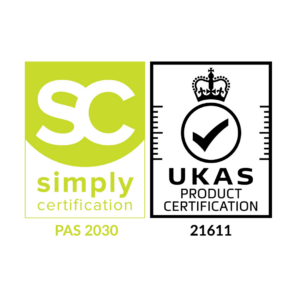Cavity wall insulation has become an increasingly popular solution in the UK for improving energy efficiency and reducing heating costs in homes and buildings.
Let’s explores the benefits, types, installation process, costs, and potential savings associated with cavity wall insulation. We’ll also discuss common challenges, government schemes, and recommendations for cavity wall insulation in the UK.
If you’re a homeowner or building professional considering insulation options, here at NXTGEN Futures we can help you understand the ins and outs of cavity wall insulation and we’ll provide valuable insights that help you to make informed decisions for a more sustainable and comfortable living environment.
NXTGEN Futures have an experienced, and dedicated team that specialise in retrofit and installing Cavity Wall Insulation systems under the PAS2030 regulations to ensure that all jobs meet the necessary standards.
As per the regulations NXTGEN Futures takes a fabric first approach and as such pride ourselves on our insulating works. We have in-house staff trained at level 2, 3 and 5 so far so we have a deeper understanding of retrofit.
Our Accreditations







1. Introduction to Cavity Wall Insulation
1.1 What is Cavity Wall Insulation?
At some point in our lives, we’ve all experienced the discomfort of a chilly home during the winter months or the frustration of high energy bills. That’s where cavity wall insulation comes to the rescue! Cavity wall insulation involves filling the gap or “cavity” between the inner and outer walls of a property to improve its thermal efficiency.
1.2 History and Development of Cavity Wall Insulation
Cavity wall insulation is not a new concept. In fact, it has been around since the 1920s! Initially, it was mostly used in commercial buildings, but it eventually made its way into residential properties. Over the years, the technology and materials used in cavity wall insulation have improved significantly, making it an effective and popular solution for energy efficiency in the UK.
2. Benefits of Cavity Wall Insulation
2.1 Energy Efficiency and Reduced Heating Costs
Let’s face it, nobody likes spending more money on heating their home than necessary. Cavity wall insulation acts as a cozy blanket for your house, preventing heat from escaping and reducing the need for excessive heating. This not only helps to keep your home warm and toasty, but it also saves you some hard-earned cash on energy bills.
2.2 Improved Thermal Comfort
Say goodbye to those pesky cold spots and drafts! Cavity wall insulation helps to regulate the temperature of your home more effectively, ensuring a consistent and comfortable environment throughout. No need to huddle under blankets or wear multiple layers anymore!
2.3 Noise Reduction
If you live in a noisy neighborhood or near a busy road, cavity wall insulation can be your new best friend. By filling the cavity with insulation material, it acts as a sound barrier, reducing external noise and creating a quieter indoor space. No more interruptions during your Netflix binge sessions!
3. Different Types of Cavity Wall Insulation Materials
3.1 Mineral Wool Insulation
Mineral wool, made from natural or recycled materials like rock or glass, is a popular choice for cavity wall insulation. It provides excellent thermal and acoustic insulation properties while being fire-resistant and resistant to moisture.
3.2 Foam Insulation
Foam insulation, typically made from polyurethane, expands when injected into the cavity, filling every nook and cranny. This type of insulation creates a seamless layer that effectively seals the gaps, ensuring maximum thermal efficiency and reducing the risk of draughts.
3.3 Polystyrene Bead Insulation
Polystyrene bead insulation is another commonly used material for cavity wall insulation. These tiny beads are injected into the cavity, forming an insulating layer. They are lightweight, resistant to moisture, and provide good thermal insulation properties.
4. The Process of Cavity Wall Insulation Installation
4.1 Initial Assessment and Survey
Before diving into the installation process, a professional will conduct an assessment and survey of your property to determine its suitability for cavity wall insulation. They will check for any existing damp or structural issues that need to be addressed beforehand.
4.2 Preparation and Necessary Precautions
Once the assessment is complete, it’s time to prepare for the installation. This might involve moving furniture, covering surfaces, and ensuring the safety of both the installation team and occupants. It’s all about taking the necessary precautions to make the process as smooth as possible.
4.3 Installation Techniques
There are different methods for cavity wall insulation installation, depending on the type of insulation material chosen. The most common technique involves drilling small holes in the outer walls and then using special equipment to inject the insulation material into the cavity. Once the process is complete, the holes are filled and made discreet, leaving your walls looking as good as new.
So there you have it, cavity wall insulation in a nutshell! It’s an investment that brings both comfort and savings to your home. Say goodbye to cold and costly winters, and hello to a snug and energy-efficient dwelling.
5. Cost considerations and potential savings
5.1 Average costs of cavity wall insulation
Let’s talk turkey—how much is this cavity wall insulation going to set you back? Well, the average costs in the UK range from £500 to £1,500, depending on the size of your property and the insulation materials used. Sure, it’s not pocket change, but think of it as an investment in your home’s comfort and your future savings.
5.2 Potential savings on energy bills
Now, here’s the exciting part—potential savings on your energy bills! By getting cavity wall insulation, you can save up to £200 per year, according to the Energy Saving Trust. That’s like getting a monthly subscription to your favorite streaming service for free! Plus, you’ll be reducing your carbon footprint, so it’s a win-win for you and the planet.
5.3 Return on investment (ROI) analysis
Let’s break out the calculators (or just use your phone) and figure out the return on investment. With an average cost of, let’s say, £1,000 for cavity wall insulation, and annual savings of £200 on your energy bills, you can expect to recoup your investment in around 5 years. Not too shabby! After that, it’s like pocketing an extra £200 each year, with the added bonus of a well-insulated home.
6. Common issues and challenges with cavity wall insulation
6.1 Damp and moisture problems
As with any home improvement project, there can be some hiccups along the way. One common issue with cavity wall insulation is the potential for damp and moisture problems. Proper installation and using the correct materials can help prevent these issues, so make sure you hire a reputable installer and don’t cut any corners.
6.2 Insulation degradation and maintenance
While cavity wall insulation can last for decades, it’s essential to keep an eye on its condition. Over time, insulation materials can degrade, especially if they were not installed correctly or have been damaged. Regular maintenance and inspections will help ensure that your insulation remains effective and keeps doing its job.
6.3 Compatibility with older buildings
Older buildings can be a bit like your favorite vintage t-shirt—full of character but not always easy to work with. When it comes to cavity wall insulation, compatibility with older buildings can be a challenge. Some properties may have solid walls or unique construction methods that make cavity wall insulation unsuitable. Always consult with a professional to determine the best insulation options for older or unconventional buildings.
7. Government schemes and incentives for cavity wall insulation in the UK
7.1 The Green Homes Grant scheme
Ah, government schemes—helping us out while simultaneously confusing us. The Green Homes Grant scheme was introduced to provide financial support for energy-saving home improvements, including cavity wall insulation. You might be eligible for a voucher worth up to £5,000 to help cover the costs. Just remember to do your research and follow the scheme’s guidelines to avoid any unexpected surprises.
7.2 Energy Company Obligation (ECO)
Another government initiative, the Energy Company Obligation (ECO), focuses on helping low-income households and vulnerable individuals make energy efficiency improvements. This means that if you fall into these categories, you may qualify for free or heavily subsidized cavity wall insulation. It’s like finding a crisp tenner in your coat pocket—unexpected but definitely welcomed!
7.3 Local authority grants and funding
Local authorities across the UK also offer their own grants and funding programs to support energy-saving measures, including cavity wall insulation. These grants can vary from one area to another, so check with your local council to see what’s available in your neck of the woods. It’s like hitting the jackpot but without the flashing lights and a massive check—still pretty great, though!
8. Conclusion and recommendations for cavity wall insulation in the UK
To wrap it up, cavity wall insulation can be an excellent investment for your home, providing warmth, comfort, and long-term energy savings. While there are potential challenges and considerations to keep in mind, such as damp issues and compatibility with older buildings, these can be addressed with proper installation and maintenance. And with government schemes and incentives available, it’s worth exploring if you can shave off some of the costs. So, go on and cosy up your home with some cavity wall love!
Cavity wall insulation offers numerous benefits, including improved energy efficiency, thermal comfort, and noise reduction. By understanding the different types of insulation materials and the installation process, homeowners and professionals can make well-informed decisions. While there may be challenges and considerations such as dampness and compatibility with older buildings, government schemes and incentives provide financial support for cavity wall insulation projects. To create a more sustainable and cost-effective living environment, it is recommended to explore cavity wall insulation options and take advantage of available grants and funding. With proper planning and implementation, cavity wall insulation can make a significant difference in reducing energy consumption and enhancing the overall comfort of homes and buildings in the UK.
Cavity Wall Insulation FAQ
1. Is cavity wall insulation suitable for all types of buildings?
Cavity wall insulation is generally suitable for most modern buildings with unfilled cavities. However, it may not be suitable for older buildings with solid walls or buildings with existing insulation materials. It is recommended to consult with a professional to assess the suitability of cavity wall insulation for your specific building.
2. How long does the installation process take?
The duration of cavity wall insulation installation depends on various factors such as the size of the property and the complexity of the project. Typically, it can take anywhere from a few hours to a couple of days. The installation team will provide a more accurate estimate after conducting an initial assessment.
3. Will cavity wall insulation cause dampness or moisture issues?
While cavity wall insulation can help prevent dampness by reducing condensation, improper installation or insulation materials that are not suitable for the property can lead to moisture-related problems. It is crucial to choose experienced and reputable installers and ensure that the property has been thoroughly assessed before proceeding with insulation.
4. How much can I save on energy bills with cavity wall insulation?
The potential savings on energy bills will depend on various factors, including the current energy efficiency of your property, the type of insulation material used, and your heating habits. On average, cavity wall insulation can save homeowners up to 15% on their annual heating bills. It is recommended to consult with insulation professionals or use online calculators to estimate potential savings specific to your property.
